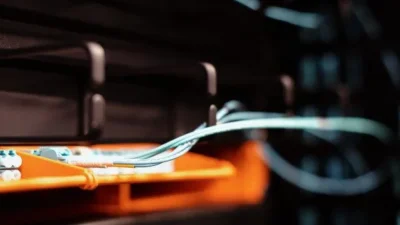Control Engineering International: Radio frequency identification (RFID) technology will have a big role to play in the smart factory of the future, enabling things to communicate in real-time with manufacturing systems, according to Control Engineering Europe.

In Europe, we call it Industry 4.0, cyber-physical systems, and the Internet of Things (IoT). In the U.S., it comes under the umbrella of the Smart Manufacturing Leadership Coalition or the Industrial Internet. However, we are all alluding to the same thing—the fourth industrial revolution and the vision of tomorrow’s manufacturing—the "smart factory."
The smart factory, which industry experts say will be upon us within the next two decades, will see machines, raw materials, and products communicating within an IoT to cooperatively drive production. In other words products will find their way independently through the production process. The goal is highly flexible, individualized mass production that is cost-effective.
Commenting on this, Mark Lynch, managing director of the Fairfield Group said: "We worked with Siemens on a project for BMW recently who [sic] are using radio frequency identification (RFID) to enable mass manufacturing capabilities to encompass the bespoke requests of their customers. At the point of order the customer selects certain aspects of their vehicle from its sunroof to the latest in in-car entertainment functionality. An RFID tag is mounted in the engine of each BMW at the U.K. plant. The tag communicates with the production line system to drive its processes to add customer specifics as the car is built. This ensures the mass production line runs without extensive interruption whilst meeting the bespoke needs of BMW’s end customers. This is a clear example of where we can see Industry 4.0 principles in practice today."
Smart factories of the future will rely on both Internet technologies and technologies such as RFID that enable things, such as components, parts, and products to communicate in real-time via radio waves with manufacturing systems hosted on the cloud. Each item is expected to have its own Internet protocol (IP) address.
RFID technologies have been advancing alongside web technologies independently for the past 70 years. The introduction of packet networking saw very early signs of the Internet emerging in the 1950s, and the earliest use of RFID technology can be traced back to World War II when a secret British project developed a system that would identify whether approaching aircraft was friend or foe using RF technologies. The fourth industrial revolution will see the two technologies come together as the Web and the physical world meet.
We have all experienced the revolutionary impact the Internet has had on culture and commerce since the early 1990s, but not many of us are aware of how RFID has developed and why it will play a major part in the fourth industrial revolution and the emergence of smart factories in the next two decades.
RFID explained
RFID is grouped under the broad category of automatic identification technology. It is a technology that transmits the identity of an item wirelessly using radio waves. Like bar codes and optical character recognition, RFID has been developed to reduce the amount of time and manual labor required to capture data about specific items.
An RFID solution generally involves a tag and a reader. An RFID tag is a microchip attached to a radio antenna mounted onto a substrate of some kind which can store anywhere from 1 B up to 64 KB of data (this is advancing as we publish). In terms of manufacturing, this could be product or shipment information, manufacture dates, sell-by dates, etc. To retrieve the data on the tag an RFID reader is required. This is a device that has one or more antennas that emit radio waves and receive signals back from tags. The reader then passes the data in a digital format to a computer system.
RFID tags can either be passive or active. An active tag has an on-board battery that regularly transmits its ID signal. A passive tag is activated when in the presence of an RFID reader.
As previously noted, the earliest use of RFID technology can be traced back to World War II when a secret British project developed a system that would identify whether approaching aircraft was friend or foe. They put a transmitter on each British plane. When it received signals from radar stations on the ground, it began broadcasting a signal back that identified the aircraft as friendly. RFID works on this same basic concept. The reader sends a signal to a tag which wakes up and either reflects back a signal (passive RFID) or broadcasts a signal (active RFID).
Advances in RF technologies continued through the 50s and 60s, and companies began marketing anti-theft solutions using radio waves. Electronic article surveillance (EAS) tags were attached to packaging and turned off at the check-out when purchased. The readers positioned at retail doorways would detect a tag that had not been switched off at the check-out triggering an alarm.
The first U.S. RFID patents were recorded in the 1970s, and the U.S. government used RFID to track nuclear materials in the same decade and to manage toll payment systems in the 1980s.
RFID technology began with low frequencies and developed to higher frequencies throughout the 80s into the 90s, and then came ultra high frequencies (UHF), which led to much greater read ranges (up to 19.7 feet in good conditions) and faster data transfer.
Despite all the hype of the 1990s the cost of tags and lack of international RFID standards are cited as the two main reasons why RFID technology has not been embraced as quickly and as widely as anticipated, despite its success in many applications, such as anti-theft systems for cars and payment solutions for contactless smart cards. GS1, the organization that manages bar code standards, has gone on to develop an electronic product code (EPC) for RF tags as well as EPC Information Services (EPCIS) that enable trading partners to share information about the physical movement and status of products as they travel throughout the supply chain.
Pricing varies
As for RFID tag pricing—it is all relative. There are many tags to choose from, and different tags at different prices are required for different reasons for applications. The simple fact remains that if an RFID solution delivers great return on investment (ROI) organizations will invest.
As demonstrated by the BMW example, today’s manufacturers need to have the capabilities to launch new products incorporating innovative technologies without a lengthy or costly modification of production lines. On the other hand they must be able to produce even the smallest of quantities (lot size of one) without increased costs to satisfy the varied needs of customers. Mass customization is the key to delivering an extensive product portfolio without dramatically increasing warehousing and logistics costs. This is what the smart factories of the future promise to deliver. In some cases, using RFID, they already are beginning to do so.
– Suzanne Gill is editor of Control Engineering Europe; edited by Joy Chang, digital project manager, Control Engineering, [email protected].
ONLINE extra
See related stories about smart factories below.


